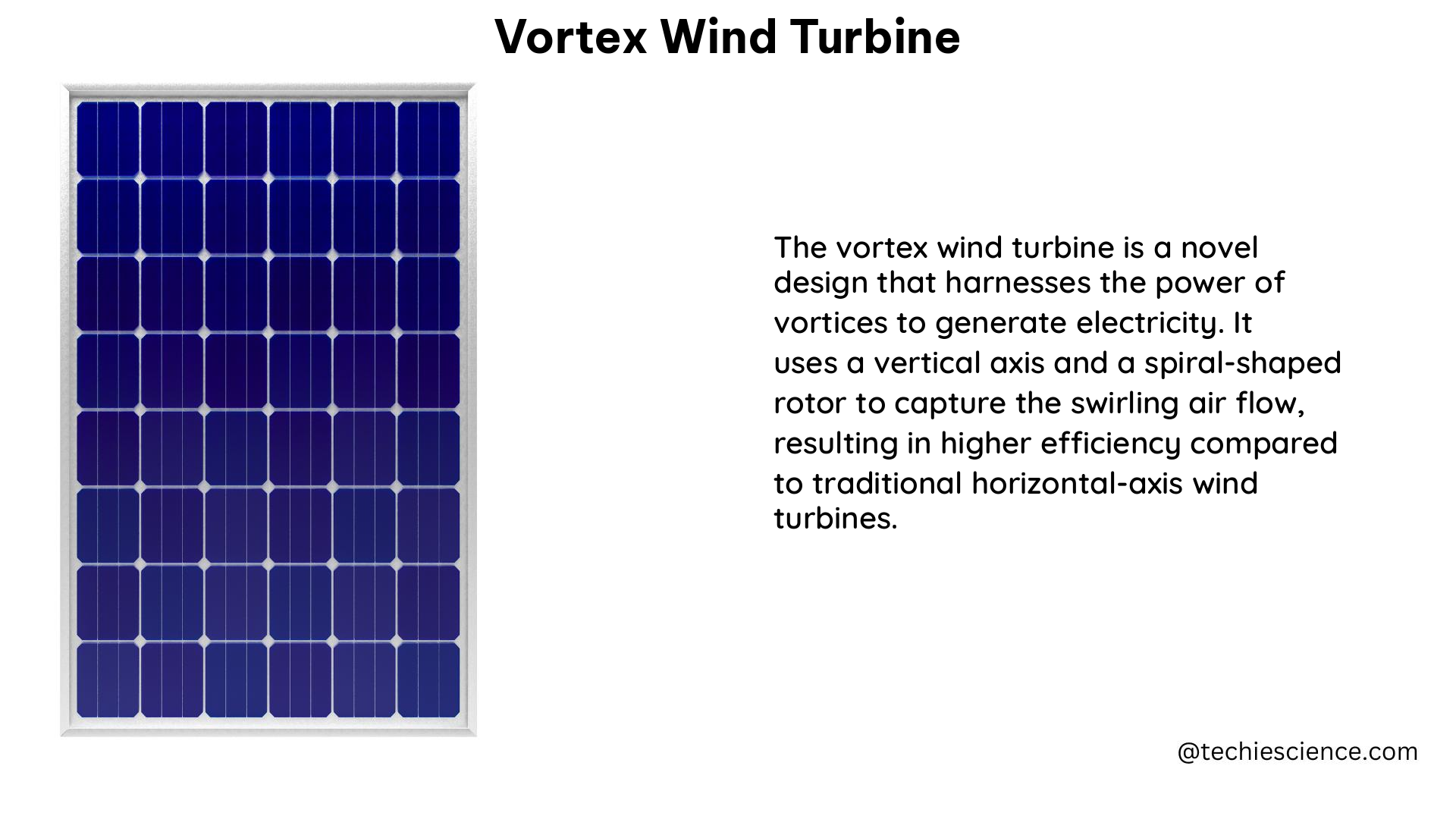The vortex wind turbine is a revolutionary wind energy conversion system that harnesses the principle of vortex shedding to generate electricity. Unlike traditional wind turbines, vortex wind turbines are designed to operate efficiently at low wind speeds, making them a viable option for urban environments and areas with limited wind resources.
Understanding Vortex Shedding
Vortex shedding is a fluid dynamics phenomenon that occurs when a fluid, such as air, flows past a cylindrical or bluff body. As the fluid flows around the body, it separates and forms alternating vortices downstream, creating a pattern known as the von Kármán vortex street. This vortex shedding can be harnessed to generate mechanical power, which can then be converted into electrical power.
Key Features of Vortex Wind Turbines

-
Low Wind Speed Operation: Vortex wind turbines are designed to operate at wind speeds as low as 2 m/s, making them suitable for urban and low-wind environments. This is in contrast to traditional wind turbines, which typically require a minimum wind speed of 4 m/s to operate efficiently.
-
Compact and Lightweight Design: Vortex wind turbines are significantly smaller and lighter than traditional wind turbines. For example, the Vortex Bladeless turbine has a height of 3.5 meters and a weight of only 40 kilograms, making it much easier to install and maintain.
-
No Moving Parts: Vortex wind turbines have no moving parts, which reduces the risk of mechanical failure and maintenance costs. This also makes them more reliable and durable compared to traditional wind turbines.
Performance and Efficiency
Several studies have been conducted to quantify the performance and efficiency of vortex wind turbines:
-
Vortex Generator Installation: A study published in the journal Renewable Energy found that the installation of vortex generators can increase wind power production by up to 10%, depending on the wind speed and turbulence conditions.
-
Vortex Identification Methods: A study published in the journal Wind Energy compared different vortex identification methods to evaluate their suitability for studying wind turbine tip vortices. The study found that the Graftieaux method was the most effective for identifying and quantifying wind turbine tip vortices.
-
Computational Fluid Dynamics (CFD) Simulations: Researchers at Texas A&M University have used advanced data science and CFD simulations to study the complex fluid dynamics of vortex wind turbines. Their findings have provided valuable insights into the optimization of vortex wind turbine design and performance.
DIY Vortex Wind Turbine Projects
For individuals interested in building their own vortex wind turbines, there are several resources available:
-
Vortex Bladeless Website: The Vortex Bladeless website provides detailed instructions and schematics for building a small-scale vortex wind turbine using readily available materials.
-
Vortex Wind Turbine Forum: This online forum is dedicated to the development and construction of vortex wind turbines, with a wealth of information and community support for DIY enthusiasts.
-
Online Tutorials and Guides: There are numerous online tutorials and guides that provide step-by-step instructions for building various types of vortex wind turbines, ranging from simple designs to more advanced models.
Conclusion
Vortex wind turbines represent a promising alternative to traditional wind turbines, offering several advantages in terms of size, weight, and operational efficiency. With ongoing research and development, vortex wind turbines have the potential to play a significant role in the global transition to renewable energy sources.
References
- Vortex FDC: Wind Resource Data for Wind Farm Developments. Retrieved from https://vortexfdc.com/
- Quantifying the effect of vortex generator installation on wind power production: An academia-industry case study. Retrieved from https://www.sciencedirect.com/science/article/am/pii/S0960148117306213
- Vortex identification methods applied to wind turbine tip vortices – WES. Retrieved from https://wes.copernicus.org/articles/7/585/2022/
- Yi Ding brings data science to wind energy | Texas A&M. Retrieved from https://tees.tamu.edu/news/2018/09/yu-ding-brings-data-science-to-wind-energy.html
- Vortex Wind Turbine Forum. Retrieved from https://www.vortexwindturbineforum.com/

The lambdageeks.com Core SME Team is a group of experienced subject matter experts from diverse scientific and technical fields including Physics, Chemistry, Technology,Electronics & Electrical Engineering, Automotive, Mechanical Engineering. Our team collaborates to create high-quality, well-researched articles on a wide range of science and technology topics for the lambdageeks.com website.
All Our Senior SME are having more than 7 Years of experience in the respective fields . They are either Working Industry Professionals or assocaited With different Universities. Refer Our Authors Page to get to know About our Core SMEs.